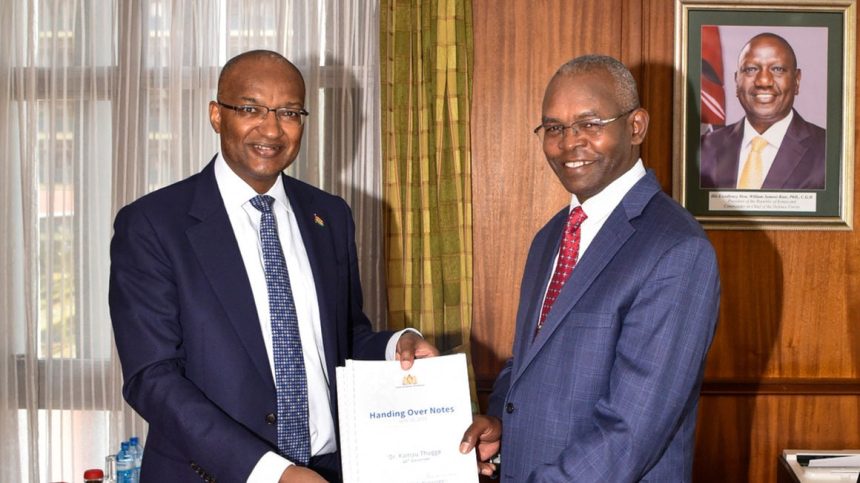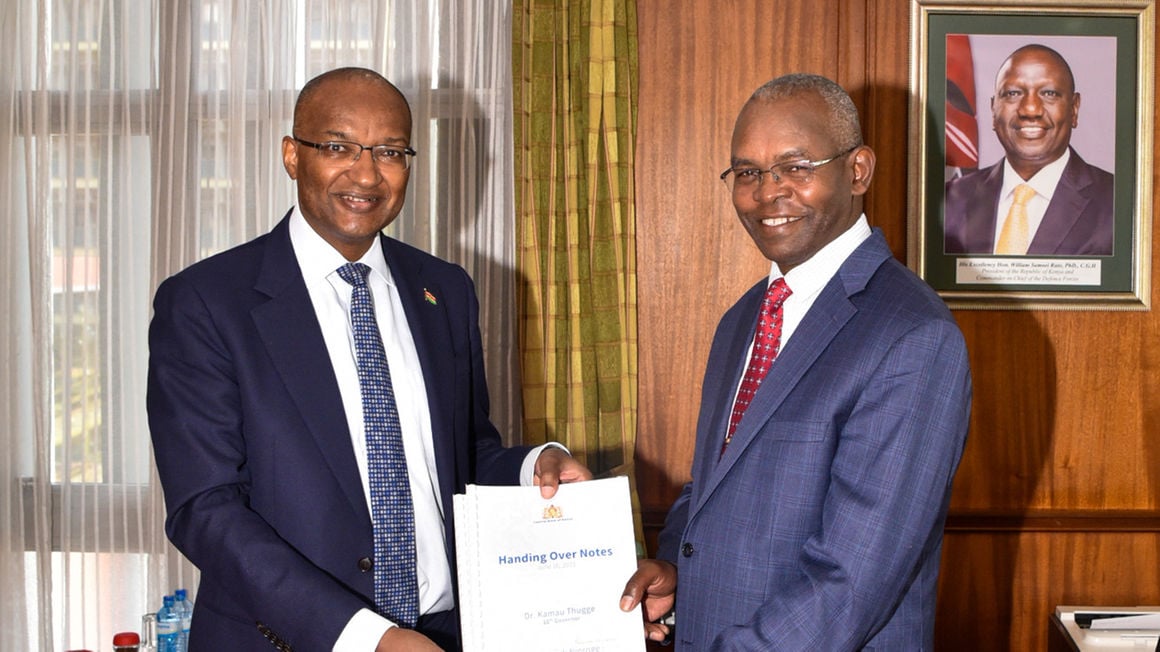The Kenyan shilling has breached the 140-unit mark trading against the US dollar, defying State interventions to stop its downward spiral, in the first major test for the new Central Bank of Kenya (CBK) boss Kamau Thugge.
The currency has further shed 3.93 percent of its value since April 18 when the first consignment of petroleum products procured on a six-month credit from Saudi Arabia and the United Arab Emirates landed at the Port of Mombasa.
President William Ruto had backed the government-government import deal, which enables oil marketers to buy fuel in shillings, alongside the regulator’s action, to ease demand for the dollar and prop up the local currency.
The code, enforced on March 22, prohibits banks from engaging in trading practices, quoting prices or making transactions with the intention of manipulating price movements or disrupting the functioning of the market.
Dr Ruto said last month his administration had reined in the widening spread in the forex market, accusing his predecessor’s administration of presiding over an artificial exchange rate market which resulted in a biting shortage in the supply of the dollars and hit sourcing of key commodities from abroad like fuel.
“There were two parallel rates. There was dollar by government which they said was Sh120 and there was another. If you really wanted to go and get the dollars, then you really had to go and get it at 128 or thereabout,” Dr Ruto told a media engagement forum on May 14.
“We reinstated the interbank forex market. The spread that was Sh12 to Sh15. That has shrunk to between Sh2 and Sh3.”
At an average official rate of 140.04 units per dollar last Friday, the shilling has lost 13.51 percent of its value against the dollar since the beginning of the year after closing at 123.37 at the end of last year. That is a sharper slide compared with 3.76 percent in a similar period last year, signalling the gaping mismatch in supply and demand of the greenback. The rate in retail market is even higher, with most tier-one banks selling the dollar at more than Sh146 in banking halls and buying it at about Sh137 — a spread of nearly Sh10.
Read: Forex buffer rises above 4 months cover on World Bank loan
Continued weakening of the shilling makes imports costlier and piles pressure on the cost of living due to the country’s reliance on foreign markets for essential supplies such as fuel and materials for factories.
Consumers are already feeling the impact of the depreciating shilling after purchasing prices rose fastest in more than half a year. Firms polled in the composite Purchasing Managers Index (PMI) for May linked the increased consumer prices partly to the weakening shilling, which pushed up input prices at the sharpest pace since January 2014.
“Input prices are now at their highest since the survey began in 2014 as the KES [shilling] depreciated further, which increased import costs,” Mulalo Madula, an economist with South African-based Standard Bank, the parent firm of Stanbic Bank, wrote in the PMI on June 6.
“This caused the greatest increase in output prices in seven months — but it was less than the concomitant increase in input prices.”
This is happening after Kenya’s foreign exchange reserves rose above the desired four months equivalent of import cover for the first time in six months after the World Bank wired $1 billion loan. The reserves hit $7.459 billion (about Sh1.04 trillion where $1 is equivalent to Sh140.04) last Thursday, enough to cater for the country’s import needs for about 4.11 months, according to the CBK.
Forex reserves are largely tapped to pay for importation of critical government goods such as drugs as well as repay external debt.




